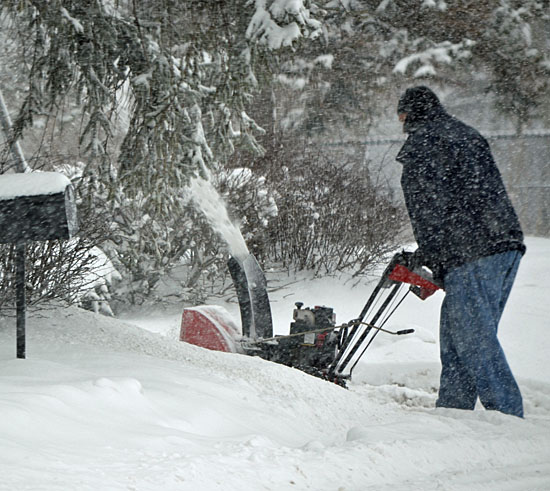Time now to prepare for winter weather
Submitted information
COLUMBUS — Last year, thanks to El Niño, Ohio and other Midwestern states had a pretty mild winter. But this year, according to the National Oceanic and Atmospheric Administration (NOAA) Climate Prediction Center, La Niña will influence winter conditions, bringing wetter, cooler conditions to the northern United States. Forecasters say La Niña will bring more snow across Ohio and all of the Great Lakes.
In preparation for winter this year, Ohio Governor John R. Kasich and the Ohio Committee for Severe Weather Awareness (OCSWA) are promoting Winter Safety Awareness Week, November 13-19.

During this week, Gov. Kasich encourages households and businesses to update their safety plans, replenish their disaster supply kit, and prepare themselves, their vehicles, and their property for winter-related incidents.
“Winter Safety Week is the perfect time to start winterizing your homes and vehicles — to prepare before snow storms hit,” said Ohio EMA Executive Director Sima Merick. “If you don’t have an emergency supply kit, now is a good time to start one. You may find that you already have a lot of items on hand. Check the batteries in your flashlights and weather radios. Test your smoke and carbon monoxide detectors and conduct fire drills.”
If snowy or icy conditions exist, traveling can get pretty hectic. Before getting on the road, it’s best to know before you go. Pay attention to weather forecasts and traffic reports. Listen for reports of school and business closings, snow emergencies, traffic delays or road closures. Plan travel time accordingly.
To help prepare for winter, OCSWA recommends the following:
Prepare one’s home for winter. Cut and remove low-hanging and dead tree branches. Ice, snow, and strong winds can cause tree limbs to break and fall. Have gutters cleaned. Snow and ice can build up quickly if gutters are clogged with debris. Have auxiliary heaters, furnaces, and fireplaces checked or serviced before using. If using a portable generator, read instructions thoroughly to guard against carbon monoxide poisoning. Review one’s homeowner’s insurance policy; talk with an insurance agent about the financial risks that winter can bring. Consider purchasing flood insurance.
Prepare winter disaster kits for the home and vehicle. Refresh stored nonperishable foods and bottled water. Change the batteries in smoke detectors, carbon monoxide detectors, and radios. Winter emergency kits should include warm clothing, blankets, flashlights, new batteries, coats, hats, gloves, a battery-operated or hand-cranked radio, first aid kit, and enough nonperishable food and water (one gallon per person, per day) to sustain every family member for several days. Have stored food, bottled water, and supplies for pets as well.
Invest in a NOAA Public Alert/Weather Radio. Every home, school and business should have a tone-alert weather radio with a battery back-up. Weather and public alert radios are programmed to automatically sound an alert during public safety and severe weather events. Click on www.nws.noaa.gov/nwr/ for additional information.
Update disaster preparedness plans. Every home, school, and business should have written plans for the different types of incidents that can occur. Review the plans with the entire family or staff. Everyone should know what to do in the event of a snow or ice storm, a prolonged power outage, a flood or fire. Post contact information for your local emergency management agency. Prepare and practice drills that require sheltering in place and evacuation. Because phone numbers change and families move, ensure one’s emergency contact list is updated. Establish a meeting place outside of the home, school or business, where others will know where to find or meet with you.
OCSWA is an advocate for emergency preparedness and is comprised of representatives from the following: American Red Cross; Emergency Management Association of Ohio; National Weather Service; Ohio Citizen Corps; Ohio Department of Public Safety — Emergency Management Agency; Ohio Insurance Institute; Ohio Department of Commerce — State Fire Marshal; Ohio Departments of Aging, Education, Health, Insurance, Mental Health & Addiction Services, Natural Resources, and Transportation; NBC4 (WCMH) and WBNS-10TV.
For additional information on winter weather safety and severe weather preparedness, visit OCSWA’s site at www.weathersafety.ohio.gov.
POSTED: 11/14/16 at 8:36 am. FILED UNDER: News






